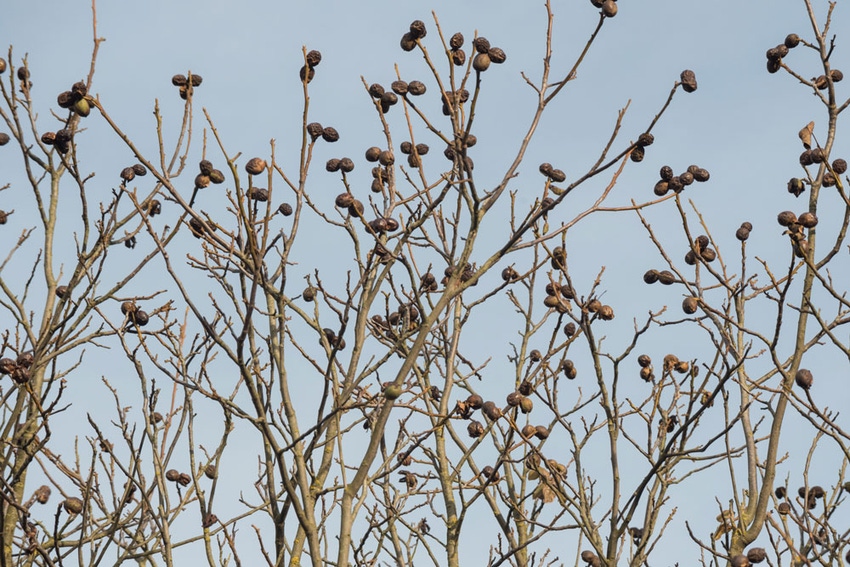
Following the “4 R’s” can improve nitrogen delivery to tree nuts
“I know you guys have heard more about nitrogen in the past two years than you ever wanted to,” said Katherine Pope, a University of California (UC) Cooperative Extension farm advisor in Sacramento, Solano, and Yolo counties.
April 20, 2016

The need to quantify nitrogen (N) usage to address regulations on the amount of nitrates in drinking water has spawned the development of budgets and research on how best to deliver N to tree nuts and other crops.
“I know you guys have heard more about nitrogen in the past two years than you ever wanted to,” said Katherine Pope, a University of California (UC) Cooperative Extension farm advisor in Sacramento, Solano, and Yolo counties.
Speaking to walnut growers in Visalia, Pope then proceeded to tell them still more about the subject, starting with what is being termed the “4 R’s” of N management. Many of the same principles apply to growing almonds and other crops.
The R’s include:
Right rate
Research led by Pope and funded by the California Department of Food and Agriculture and the California Walnut Board examined the amount of N found on average in every ton of in-shell walnuts with 8 percent moisture at harvest. This amounted to 29 pounds.
Pope looked at six mature, moderate-to-high-yielding orchards, three Chandler and three Tulare, in the northern Sacramento Valley, northern San Joaquin County, and Hanford.
Researchers drilled into trees, dug up roots, and looked at the N amount in branches. The objective: match supply with demand. Calculate the amount of organic N, the amount in water, and the amount in compost and manure.
Pope said more research this season will seek to put more exact numbers to N removed at harvest and new growth.
Right time
Pope said it’s ideal to apply N to walnut trees four times during the season. She recommends adding 25 percent of needed nitrogen in May, June, July, and August.
“Remember that nitrogen can only be taken up when there are leaves on the tree,” she said. “The first month of growth uses stored nitrogen, not nitrogen from the soil, and demand during the rest of the season is evenly spread out.”
Right place
Delivery should be to the active roots. N in any form moves with water, Pope said. Half of the N in ammonia will turn into nitrates.
The idea is to minimize movement below the root zone, which is in the top 2-3 feet of soil.
Right source
In experiments by Patrick Brown, UC Davis professor of plant nutrition in almonds, there was no difference in yield between equal amounts of N as urea ammonium nitrate and calcium ammonium nitrate.
Material choice is more a function of price per unit of N and other needs particular to an orchard, like pH impact.
Pope walked growers through use of a N budgeting worksheet used by UC to determine how much N should be added annually.
The worksheet takes into account the amount of N removed in the crop, N contributions from irrigation water, N contributions from manure or compost, N contributions from cover crops, total N from non-fertilizer sources, additional N needed, and N fertilizer application rate.
Pope said “spoon feeding” – using small amounts more frequently – increases N use efficiency.
Brown cited an almond study that likewise found that it is more efficient to run small amounts of N through the drip line frequently throughout the season, rather than large amounts a few times. Another study demonstrated the nitrates in well water are as useful to almond trees as the N in fertilizer.
Pope recommends leaf monitoring for N deficiency, with sampling in July of only terminal leaflets that are 6-8 feet from the ground at the tree periphery. She recommends sampling 50 scattered leaflets.
N deficiency will show earlier in the leaf than in yield, she said.
Pope pointed out that the N budgeting formula and other information on the 4 R’s are available online at http://ceyolo.ucanr.edu/files/234760.pdf.
You May Also Like



